As a bank accountant, you need a laptop that can keep up with the fast-paced and demanding nature of your profession. With the constant need for accuracy and efficiency, it's essential to invest in the best laptop for bank accounting that caters to your specific requirements. In this guide, I'll walk you through the crucial factors to consider while selecting the ideal laptop for your banking and accounting needs.
My experience in the area of laptops and my familiarity with the banking sector have allowed me to develop a keen understanding of the unique needs of bank accountants. In evaluating the best laptop for bank accounting, I've reviewed an extensive laptop spreadsheet of recent releases, comparing specs and reviews from both professionals and users. I've narrowed down the top laptops based on topic-specific requirements such as reliable performance, robust security features, and a comfortable keyboard to ensure seamless data entry and analysis.
While considering the recommendations, keep in mind the importance of balancing portability, battery life, and processing power, as your role may require frequent travel to client sites or lengthy work sessions. Additionally, bank accountants often work with data-intensive applications like QuickBooks, Excel, and financial analysis software, so a laptop with sufficient RAM and storage capacity is crucial. By the end of this guide, you'll be well-equipped to make an informed decision on the best laptop for your banking and accounting tasks.
Processing power: How much is enough for bank accounting laptops?
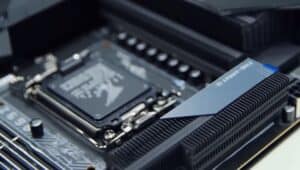
When it comes to choosing the right processor for your bank accounting laptop, there are a few factors to consider. The market has evolved in the last few years, and there are plenty of options to choose from. But before we dive into recommendations, let's talk about why you don't necessarily need a super-fast processor for bank accounting work.
Bank accounting software typically doesn't require the same level of performance as video editing or gaming. You won't need the latest and greatest processor to get the job done. That being said, it's always good to have a balanced solution that won't slow you down when you have multiple tabs and applications open simultaneously.
When it comes to how much money you should spend on a CPU, that really depends on your budget and performance needs. If you're looking for a budget-friendly option, an i3-1115G4 or AMD Ryzen 3 5300U should suffice. For a more mid-range option, go for an i5-1135G7 or AMD Ryzen 5 5600U. And if you're looking for the best performance, consider an i7-11370H or AMD Ryzen 7 5800H.
When it comes to what to look for in a laptop CPU, I use Cinebench R23 to compare processors because it's a popular benchmark that's easy to find online. However, we need to consider other tests that better reflect real-world performance such as PassMark or PCMark 10 (which is more difficult to find online). Additionally, it's important to pay close attention to reliability and warranty coverage – check if it has a business-class warranty from the manufacturer.
Here are my recommendations, grouped by price range:
| Price Range | Recommended Processor |
|---|---|
| Minimum | Intel Core i3-1115G4 or AMD Ryzen 3 5300U |
| Mid-range | Intel Core i5-1135G7 or AMD Ryzen 5 5600U |
| High-end | Intel Core i7-11370H or AMD Ryzen 7 5800H |
In summary, you don't necessarily need a super-fast processor for bank accounting work, but it's always good to have a balanced solution that won't slow you down. Consider your budget and performance needs, pay attention to reliability and warranty coverage, and use benchmarks such as PassMark or PCMark 10 to help you make your decision.
Boost Your Bank's Performance with a High-End Graphics Card
If you're in the market for a new laptop for Bank Accounting, you may be wondering whether you need a dedicated graphics card. In most cases, you don't. Integrated graphics, which are included in most CPUs, are more than enough for basic banking applications. However, if you plan to do some light gaming on the side, a dedicated GPU can come in handy.
The graphics market has changed significantly in the past few years. Nvidia has dominated the laptop GPU market, and the RTX 40 series cards are already hitting the shelves. However, the RTX 30 series cards still comprise the lion's share of the current notebook GPU market.
It's worth noting that Nvidia has discontinued the Max-Q label for its RTX graphics cards. Now, an exact GPU wattage is determined by a laptop manufacturer (OEM). Unfortunately, that results in a wide variance in graphics performance even in laptops with the same GPU chipset.
To identify a suitable GPU, you can use 3DMark scores, which provide a good indication of how well a laptop performs in 3D applications such as CAD or game engines (Unity, Unreal Engine). If you're looking for a laptop with an above-average graphics card, make sure it has enough power delivery (or PCIe lanes) to ensure your system doesn't throttle down when under load.
In terms of specific recommendations, a minimum of a GeForce GTX 1650 should suffice for basic banking applications. For those who want to do some light gaming on the side, the recommended GPU is the GeForce RTX 3050. If you're looking for a high-end option, the GeForce RTX 2060 is a great choice.
Overall, a dedicated graphics card is not necessary for most banking applications. However, if you want to do some light gaming on the side, investing in a suitable GPU can enhance your overall laptop experience.
Banking on the Right Laptop: Your Top FAQs Answered
Q: What are the recommended laptop specs for bank accounting?
The recommended laptop specs for bank accounting are at least an i5-1135G7 processor, 16 GB of memory, and a dedicated graphics card, such as the GeForce RTX 3050 or higher.
Which is the best laptop for bank accounting software?
The best laptop for bank accounting software would be the Lenovo Legion 5 Pro, which provides high-end specifications at a reasonable price.
Can I use a normal laptop for bank accounting?
While it is possible to use a regular laptop for bank accounting, it is recommended that you have a dedicated graphics card and a high amount of memory for better performance.
What is the minimum RAM requirement for bank accounting software?
The minimum RAM requirement for bank accounting software is 8 GB, but it is recommended to have at least 16 GB for optimal performance.
Is a graphics card necessary for bank accounting software?
A dedicated graphics card is not necessary for bank accounting software but recommended for better performance when running multiple applications.
What is the ideal storage capacity for a laptop used for bank accounting?
The ideal storage capacity for a laptop used for bank accounting would be at least 512 GB to 1 TB, depending on your needs.
What is the minimum processor requirement for bank accounting software?
The minimum processor requirement for bank accounting software is an i3-1115G4 or equivalent, but it is recommended to have at least an i5-1135G7 processor for better performance.
Can I use a MacBook for bank accounting?
Yes, you can use a MacBook for bank accounting, but make sure it meets the recommended specifications for the software.
How to choose a laptop for bank accounting?
To choose a laptop for bank accounting, make sure it has a dedicated graphics card, at least 16 GB of memory, and a fast processor. Also, consider factors such as the storage capacity and price range.
Which brand of laptop is best for bank accounting?
There are several brands that offer laptops suitable for bank accounting, including HP, Lenovo, and ASUS. The Lenovo Legion 5 Pro is an excellent choice due to its high-end specifications at a reasonable price.
Memory Matters: How Much RAM Do You Need for Bank Accounting?
In the modern banking environment, having enough RAM in your laptop is crucial for maintaining productivity and keeping up with the workload. RAM, or Random Access Memory, is responsible for temporarily storing data that your computer needs to access quickly. The more RAM you have, the more applications and data your computer can handle at once without slowing down.
For bank accountants, the amount of memory needed will depend on the size of the files they are working with and the number of applications they are running simultaneously. For a MacBook, memory is not a concern as Apple's latest models have plenty of memory. However, for Windows laptops, we recommend a minimum of 8 GB of RAM. This amount should be sufficient for basic tasks like checking email and creating documents.
If you're working with larger Excel files or other memory-intensive applications, we recommend stepping up to 16 GB of RAM. This will ensure that your computer runs smoothly and quickly without any lag. However, if you are someone who opens up a lot of browser tabs, or runs multiple applications at once, 32 GB might be a better fit for your needs.
While DDR5 RAM is the latest technology available for laptops, it is still in the early stages of development and is currently only found in high-end gaming laptops and workstation notebooks. Therefore, we do not expect DDR5 RAM to be available in a bank accountant's laptop. Instead, we recommend opting for DDR4 RAM, which is widely available and reliable.
Here's a breakdown of what to expect at each price range:
| Price Range | RAM |
|---|---|
| $500-$800 | 8 GB |
| $800-$1200 | 16 GB |
| $1200+ | 32 GB |
In conclusion, RAM is a critical component of a bank accountant's laptop, and having enough memory is essential for maintaining productivity. For basic tasks, 8 GB of RAM is sufficient, while 16 GB is recommended for more memory-intensive applications. If you're running multiple applications or opening a lot of browser tabs simultaneously, 32 GB might be the best fit for your needs. Lastly, DDR4 RAM is reliable and widely available, making it the best choice for a bank accountant's laptop.
4 Best Laptops for Bank Accounting
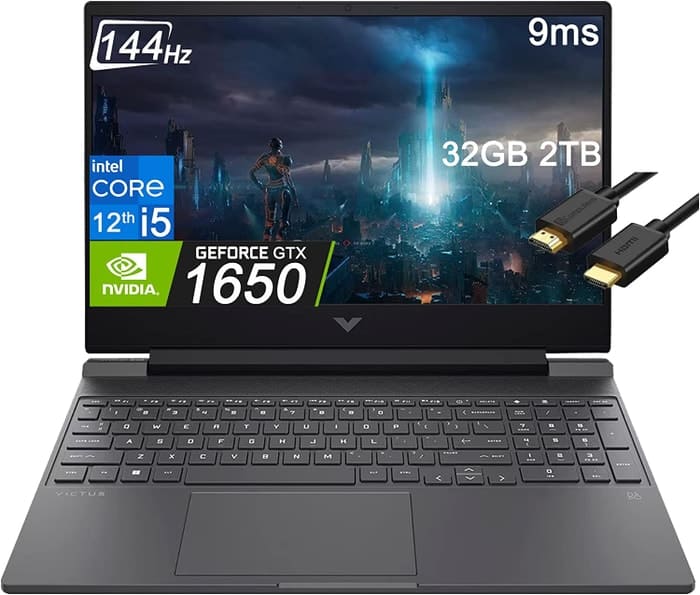
1.HP Victus 15
HP Victus 15: A budget-friendly laptop with respectable performance, ideal for gaming and work tasks.- Excellent price
- Good gaming performance
- Can double as a work laptop
- Bad battery life
- Rather plain design
Summary
The HP Victus 15 offers a solid gaming experience and impressive performance at an affordable price. It may not have the most visually appealing design and suffers from subpar battery life, but its excellent price, good gaming performance, and versatility as a work laptop make it a worthwhile choice.
Alternatives
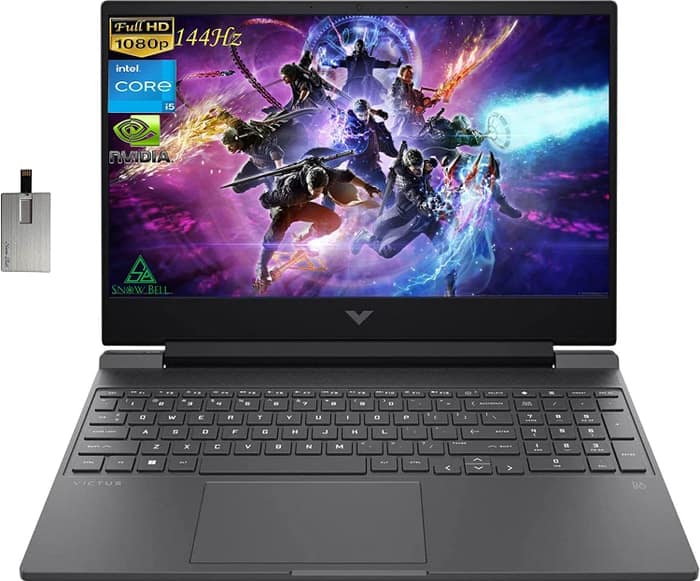
HP Victus
- Delivers smooth gameplay at 1080p.
- Fast SSD.
- No VRR to reduce screen tearing.
- Some performance loss on CPU under load.

2.ASUS TUF Dash F15
Affordable and powerful, the ASUS TUF Dash F15 is a balanced performer for those on a lower budget.- Lightweight and well-built
- Good inputs and IO
- Good range of screen options
- Significantly more powerful than previous generation
- Some quirks affecting everyday ergonomics
- Ports are mostly squeezed together on the left edge
- Be cautious of the FHD 144Hz panel option
Summary
The ASUS TUF Dash F15 is a lightweight and well-built laptop that offers good inputs and a range of screen options. It is significantly more powerful than the previous generation and comes at a competitive price, making it a great option for those looking for a budget-friendly laptop.
Reviews
Alternatives

Lenovo Legion 5i Pro 16
- Stylish, sleek form factor
- Gorgeous display
- Webcam quality is subpar
- No biometric features
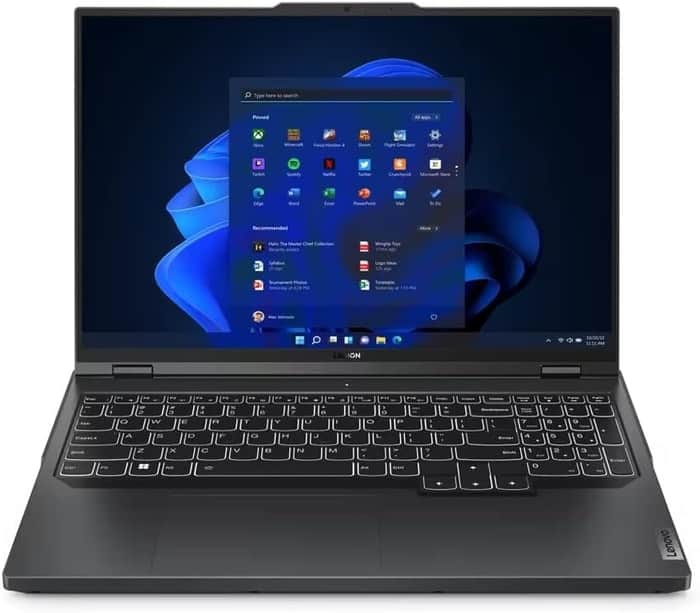
3.Lenovo Legion Pro 5
Lenovo Legion Pro 5 - A good-value mid-tier laptop with solid performance, but with some drawbacks.- Good build quality and design
- Decent screen and IO
- Competent CPU with multiple GPU options
- Competitive pricing
- No Thunderbolt or biometrics
- Not as powerful as other i9 HX implementations
- Hotspots during gaming
- Poor speakers
Summary
The Lenovo Legion Pro 5 offers great value for its price, with good build quality, a decent screen, and plenty of performance. However, it falls short with hotspots during sustained loads, limited battery life, and subpar speakers.
Reviews
Alternatives
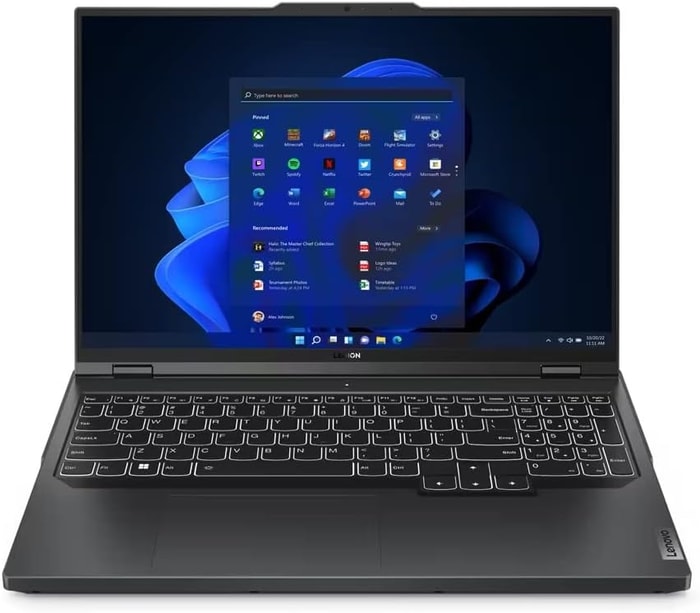 $2,840
$2,840Lenovo Legion Pro 5
- Strong performance for the price
- Quality build and port selection
- Display quality and battery life are just decent
- Bulky and heavy

4.Lenovo Legion Pro 7i 16
Lenovo Legion Pro 7i 16: A sleek and powerful gaming laptop that delivers impressive performance at a fair price.- Strong overall performance
- Big, bright, and fast display
- Per-key RGB lighting
- Some flex to keyboard deck
- Poor battery life
Summary
The Lenovo Legion Pro 7i 16 combines a stylish design with a powerful i9-13900HX processor and RTX 4090 graphics card to offer impressive gaming performance at a reasonable price. While it may have some limitations in terms of GPU performance and battery life, it remains a solid choice for gamers looking for a long-term investment.
Alternatives

HP Omen 17
- QHD display with 165 Hz
- Expandable working memory
- Slightly below-average performance for a RTX 4080
- High noise level
Table of the Best Laptops for Bank Accounting
| Laptop | Price (approx) |
| HP Victus 15 | $880 |
| ASUS TUF Dash F15 | $1,160 |
| Lenovo Legion Pro 5 | $2,630 |
| Lenovo Legion Pro 7i 16 | $3,390 |





